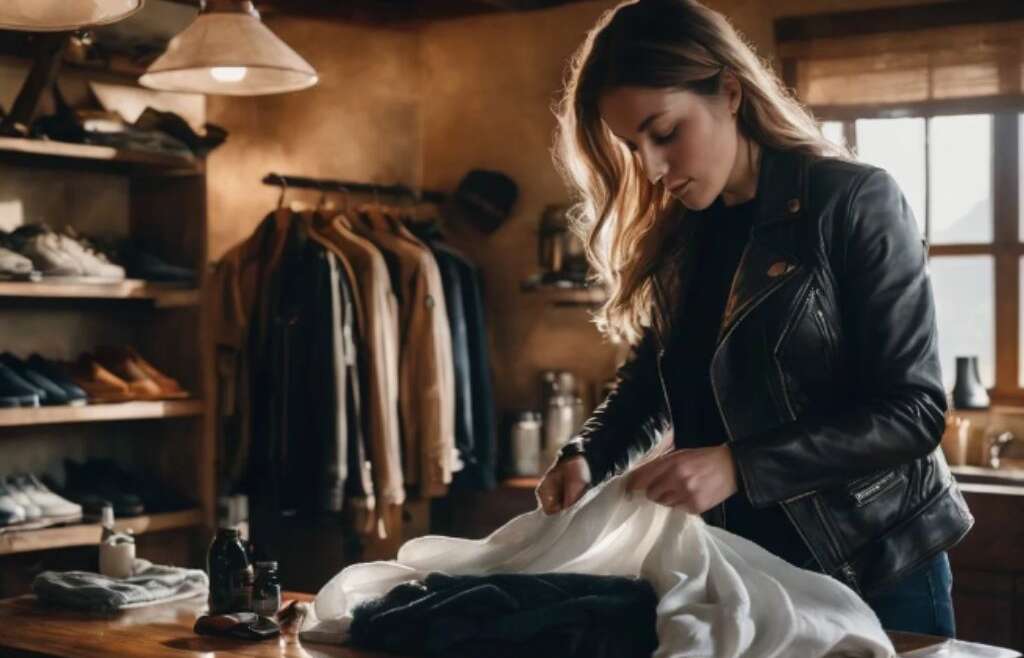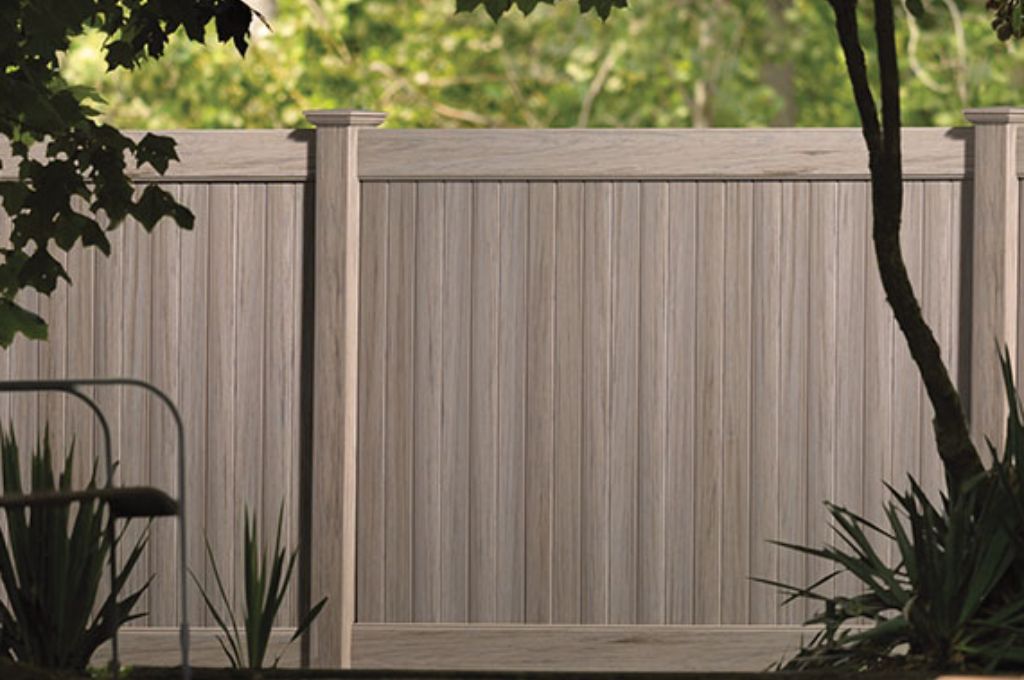Leather coats are timeless pieces that combine style, durability, and comfort. Whether dressing up for a night out or staying warm during chilly days, a leather coat or jacket can elevate any outfit.
This piece explores the different types of leather used in coat production, offers tips on selecting the perfect fit, and provides essential care and maintenance advice, including cleaning and conditioning techniques to preserve the leather’s quality.
By the end, you’ll have the knowledge needed to choose, care for, and keep your leather coat looking its best for years to come, understanding how to avoid common issues like water damage and stains.
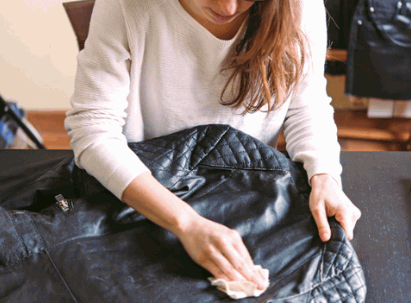
What Is A Leather Coat?
A leather coat is a stylish and durable outerwear that is crafted from various types of leather, designed to provide warmth and protect against the elements while making a fashion statement. Renowned for its quality and craftsmanship, the leather coat exemplifies an investment in lasting style and functionality. With the guidance of experts, understanding the nuances of leather types and maintenance can enhance the longevity and appearance of your leather goods. Whether you prefer a classic design or a contemporary cut, a leather coat is a versatile addition to any wardrobe.
Discover: How To Take Care A Leather Sofa

What Types Of Leather Are Used For Coats?
Leather coats come in various types of leather, each offering distinct characteristics that influence their durability, texture, and appearance. Among the most popular leather types used for coats are cowhide leather, known for its toughness; lambskin leather, celebrated for its soft and luxurious feel; goatskin leather, favored for its lightweight and durable nature; and suede leather, which provides a unique texture and aesthetic appeal. Understanding these leather types is essential for selecting a coat that meets your style and functional needs.
Cowhide Leather
Cowhide leather is one of the most widely used materials for leather coats due to its exceptional durability and strength, making it ideal for outerwear that withstands wear and tear over time. This leather type is renowned for its robust nature and resistance to abrasions, which makes it a popular choice for both fashion and functionality. Cowhide leather is one of the most widely used materials for leather coats due to its exceptional durability and strength, making it ideal for outerwear that withstands wear and tear over time. This leather type is renowned for its robust nature and resistance to abrasions, which makes it a popular choice for both fashion and functionality.
Plus its durability, leather coats made from cowhide offer several advantages, like excellent insulation against cold weather and a sleek appearance that complements various styles. Potential drawbacks include weight, which might make some coats cumbersome, and the need for regular maintenance to prevent drying and cracking.
- To maintain the beauty and functionality of your cowhide coat, proper care is essential.
- Regularly conditioning the leather with a high-quality leather conditioner will help keep it supple, while avoiding exposure to harsh chemicals and direct sunlight will preserve its color and texture.
Therefore, incorporating a maintenance routine not only prolongs the lifespan of the coat but also enhances its aesthetic appeal, linking back to the theme of leather care that is vital for any leather enthusiast.
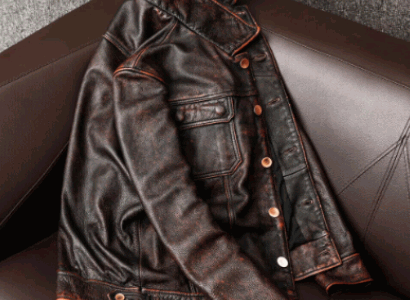
Lambskin Leather
Lambskin leather is highly regarded for its exquisite softness and luxurious texture, making it a favored choice for high-end leather coats that offer both style and comfort. Its lightweight nature and supple feel provide a unique wearing experience, appealing to those seeking elegance in their leather goods.
This remarkable material is not only prized for its appearance but also its durability, often standing the test of time when cared for properly. The delicate finish has become a hallmark in the fashion industry, adorning the collections of many renowned designers and instantly elevating the chic factor of any outfit.
Individuals who cherish high-quality leather goods appreciate lambskin for its ability to complement a range of styles, from casual wear to more sophisticated ensembles.
- To maintain its stunning appearance, regular cleaning is essential.
- Utilizing a soft cloth to wipe away dust and dirt will help preserve its natural sheen.
- Applying a quality leather conditioner periodically aids in keeping the skin supple and prevents it from drying out.
By following these simple care techniques, one can ensure that their lambskin leather pieces remain not only fashionable but also a long-lasting investment.

Goatskin Leather
Goatskin leather is known for its lightweight and durable properties, making it an excellent choice for leather jackets and coats that require flexibility and comfort without compromising on strength. This leather has a unique grain and texture that sets it apart from other types.
One of the most significant advantages of using goatskin leather in outerwear is its remarkable resilience. Not only is it less prone to wear and tear compared to other leathers, but it also ages beautifully, developing a rich patina over time. This means that your goatskin leather jacket can become a treasured piece that tells a story with every wear.
- Durability: It withstands various weather conditions, making it a practical option for everyday wear. This includes being resistant to moisture and offering good protection against the elements.
- Maintenance: Easy to clean and condition, it requires minimal upkeep to retain its luster.
- Flexibility: Offers a softness that allows for a wide range of movements, ideal for those with active lifestyles.
When compared to other leather types, goatskin often emerges as the superior choice due to its lighter weight and enhanced flexibility, allowing for a more comfortable fit that you might not find with heavier leathers like cowhide.
The combination of these features makes it significantly easier for the wearer to enjoy both style and utility.

Suede Leather
Suede leather, characterized by its soft texture and unique appearance, is a popular choice for those seeking a rich, tactile experience in their leather coats. While it offers a distinctive look, suede requires special care and consideration to maintain its quality and prevent damage. Suede leather, characterized by its soft texture and unique appearance, is a popular choice for those seeking a rich, tactile experience in their leather coats. While it offers a distinctive look, suede requires special care and consideration to maintain its quality and prevent damage.
This type of leather stands out not only for its aesthetic appeal but also for its durability when treated right. Enthusiasts of suede often appreciate its luxurious feel, which can elevate any outfit. Maintaining its pristine condition is vital; otherwise, it can become susceptible to stains, water damage, and general wear. Utilizing a leather cleaner specifically designed for suede can help maintain its appearance.
To protect this delicate material, one must invest in high-quality leather protectors that shield against moisture and dirt. Regularly applying a protective spray and employing the following care techniques can significantly extend the life of suede:
- Use a soft brush to remove dirt and dust.
- Store suede items in a cool, dry place to prevent mildew.
- Avoid direct contact with heat sources that could dry out the material.
- For stains, consider using a specialized suede eraser or cloth.
These thoughtful measures ensure that the beauty of suede leather remains intact, allowing wearers to enjoy its rich texture for years to come.

How To Choose The Right Leather Coat?
Choosing the right leather coat involves several considerations, including style, fit, quality, and the specific leather type, each factor contributing to the overall comfort and aesthetic appeal of the garment. To make an informed decision, it’s essential to assess your personal style preferences and understand how different types of leather can enhance your wardrobe. Additionally, evaluating the quality of the leather and craftsmanship can ensure that your investment stands the test of time.
Consider The Style And Fit
When selecting a leather coat, it is crucial to consider both the style and fit, as these elements greatly influence how the coat complements your personal aesthetic and comfort level. Different styles such as bomber jackets, trench coats, and blazers may cater to various occasions and preferences. When selecting a leather coat, it is crucial to consider both the style and fit, as these elements greatly influence how the coat complements your personal aesthetic and comfort level. Different styles such as bomber jackets, trench coats, and blazers may cater to various occasions and preferences.
Choosing the right leather coat involves understanding your body type, as different shapes can drastically change how the coat looks when worn. For instance, tailored fits can enhance a sleek silhouette, while a more relaxed style can add an element of comfort. Checking the fit and feel when layered with other clothing is crucial for ensuring comfort.
When trying on these coats, it’s beneficial to keep the following tips in mind:
- Experiment with various styles to see what resonates with you.
- Ensure the shoulders fit well; any tugging or pulling can indicate an improper size.
- Consider how the coat feels with layers underneath, especially in colder climates.
- Don’t hesitate to explore simple alterations, as they can be a game-changer in achieving your desired look.
By focusing on both aesthetic appeal and a proper fit, you can enjoy a timeless leather coat that truly reflects your individual taste.
Check The Quality Of Leather
Checking the quality of leather is essential when choosing a leather coat, as high-quality leather ensures durability and longevity, making your investment worthwhile. Look for signs of craftsmanship, such as even stitching and a well-finished surface, which indicate a superior product.
To further explore how to assess leather quality, consider the following points that can help you make an informed decision. Checking the quality of leather is essential when choosing a leather coat, as high-quality leather ensures durability and longevity, making your investment worthwhile. Look for signs of craftsmanship, such as even stitching and a well-finished surface, which indicate a superior product. Checking for any signs of damage or improper restoration is also crucial.
To further explore how to assess leather quality, consider the following points that can help you make an informed decision: Checking the quality of leather is essential when choosing a leather coat, as high-quality leather ensures durability and longevity, making your investment worthwhile. Look for signs of craftsmanship, such as even stitching and a well-finished surface, which indicate a superior product.
To further explore how to assess leather quality, consider the following points that can help you make an informed decision:
- Types of Leather: Familiarize yourself with different types, such as full-grain, top-grain, nubuck, and genuine leather, as they vary significantly in quality and durability.
- Feel and Texture: High-quality leather should feel supple and smooth to the touch. Avoid overly stiff leather, as it often indicates lower quality or the use of synthetic materials.
- Smell: Authentic leather has a distinctive, rich aroma, unlike plastic or faux leather, which often emit a chemical scent.
- Finish: Examine the finish; high-quality leather will have a consistent, even color without excessive glossiness or imperfections.
Caring for your investment with appropriate leather conditioners, and avoiding exposure to moisture can significantly prolong its life.
Look For Proper Hardware And Stitching
Proper hardware and stitching play a significant role in the overall quality and functionality of a leather coat, with well-constructed elements contributing to both durability and aesthetics. Quality zippers, buttons, and stitching techniques can enhance the coat’s longevity and ensure it withstands everyday wear.
When selecting a leather coat, it is essential to scrutinize the craftsmanship that sets apart premium products from lesser options. Examining the hardware is critical; opt for zippers that glide smoothly and buttons that feel securely attached. A well-made coat will also sport stitching that appears even and tight, without loose threads.
Here are some tips to consider:
- Check for consistent stitch length, which indicates careful workmanship.
- Look for reinforced seams in high-stress areas like pockets and armholes to ensure durability.
- Assess the type of leather for its quality—full-grain leather is often the best choice.
By dedicating attention to these details, one can invest in a leather coat that not only looks good but also lasts through the seasons.

Consider The Price
Considering the price of a leather coat is essential, as it often reflects the quality and craftsmanship involved in its creation. While it may be tempting to opt for cheaper options, investing in a high-quality leather coat can provide long-term benefits, including durability and style.
When evaluating the price of a leather coat, one must understand that a fair price encompasses more than just the initial cost; it also involves considering factors such as the type of leather used, the brand’s reputation, and the manufacturing techniques involved. Each of these elements plays a significant role in determining the overall value of the garment.
- For instance, full-grain leather, which is regarded as the highest quality, typically commands a higher price due to its superior durability and natural texture, often associated with high-quality brands.
- On the other hand, corrected-grain leather might be more affordable but often does not offer the same longevity.
- Shopping during off-seasons or sales can lead to potential savings, allowing you to secure a top-notch leather coat without breaking the bank.
Ultimately, the key to a successful purchase is recognizing that a well-made leather coat is more than just an item of clothing; it is an investment in quality that can serve you for many years to come.
How To Care For A Leather Coat?
Caring for a leather coat is crucial to maintaining its appearance and longevity, requiring a consistent routine of cleaning, conditioning, and protecting against environmental elements. Regular maintenance not only keeps the leather looking its best but also prevents damage from moisture, stains, and wear, ensuring your investment remains intact for years to come.
Cleaning And Conditioning
Cleaning and conditioning your leather coat regularly is vital for maintaining its softness and preventing cracks and dry spots.
To keep your leather coat in pristine condition, it’s recommended to clean it approximately every three months, or more frequently if exposed to moisture, dirt, or pollutants. Start by using a soft, damp cloth to remove surface debris and dust, followed by the application of a suitable cleaner that is free from harsh chemicals, making sure to follow the product’s instructions closely. After cleaning, the application of a high-quality conditioner is essential to replenish moisture that the leather may have lost over time.
- Frequency of Cleaning: Every 3 months or as needed
- Recommended Products: Leather Cleaner, Leather Conditioner
- Cleaning Technique: Use a damp cloth to wipe clean, then apply the cleaner
- Conditioning: Follow up with a conditioner to maintain flexibility and softness
Using high-quality products is crucial; they help preserve the texture and longevity of the coat, protecting it from potential damage.

Storing Properly
Proper storage is essential for maintaining the shape and integrity of your leather coat, requiring careful attention to how and where it is hung to prevent damage from humidity and damp conditions. Using padded hangers and storing them in a cool, dry place can extend the life of your leather goods significantly.
To ensure that your leather coat remains in top condition, it’s crucial to consider additional factors that contribute to its longevity. Avoid hanging your coat in areas with fluctuating temperatures or high levels of humidity, as these can lead to mold growth or a reduced lifespan. Instead, aim for a stable environment where the moisture level can be kept in check. Additionally, applying conditioner to the leather can help maintain its suppleness and prevent it from becoming brittle.
- Use proper hangers: Invest in padded hangers that support the coat’s shape.
- Avoid plastic covers: These can trap moisture; opt for breathable garment bags instead.
- Maintain cleanliness: Regularly clean and condition the leather to preserve its suppleness.
By following these guidelines, leather apparel can be effectively protected against potential threats that may compromise its appearance and durability.

Protecting From Elements
Protecting your leather coat from the elements is crucial, as exposure to rain and snow can lead to irreversible damage, making the use of waterproof leather protectors such as Scotchgard™ Water and Sun Shield or Kiwi® Camp Dry essential.
Not only does the weather pose a risk to its integrity, but also the everyday elements like dirt and pollution can degrade its surface. To maintain the luxurious appeal and durability of leather, it’s wise to take a few essential steps before venturing out.
Here are some practical tips:
- Clean Thoroughly: Begin by gently wiping the coat with a damp cloth to remove any dirt.
- Choose the Right Product: Look for a waterproofing spray specifically designed for leather, such as Scotchgard™ Water and Sun Shield or Kiwi® Camp Dry.
- Test First: Always perform a patch test on a less visible area to prevent discoloration.
- Apply Evenly: Make sure to spray evenly across the surface and allow it to dry completely before wearing. Also, apply conditioner to maintain the softness and flexibility of the leather.
By implementing these protective measures, one can significantly extend the life and condition of their leather coat, ensuring it remains a cherished wardrobe staple for years to come.
How To Repair And Maintain A Leather Coat?
Repairing and maintaining a leather coat involves addressing both routine upkeep and specific damages, such as scratches and scuffs, to ensure it retains its original appeal and functionality. Regular inspections and timely repairs can prevent minor issues from escalating, making it possible to revive the leather’s beauty and extend its lifespan.
Fixing Scratches And Scuffs
Fixing scratches and scuffs on a leather coat is a straightforward process that can significantly enhance its appearance, often requiring minimal materials and time. Assessing the severity of the damage and using appropriate restoration techniques is key to achieving seamless results.
To begin this important restoration process, it is essential to gather the right tools and products. Depending on the extent of the scratches, options range from simple leather conditioners to specialized repair kits. Start with a clean surface by gently wiping the coat with a damp cloth to remove any dirt or grime. Once clean, consider using:
- Leather Conditioner to soften and nourish the leather
- Leather polish to restore luster
- Leather filler for deeper scratches
- Soft microfiber cloths for application
- Heat sources, like a hairdryer, to help blend products
- Leather polish to restore luster
- Leather filler for deeper scratches
- Soft microfiber cloths for application
- Heat sources, like a hairdryer, to help blend products
Taking a measured approach ensures that the leather is not further compromised, making it crucial that each step is executed with care. Regular maintenance will not only prevent future damage but also preserve the beauty of the leather over time. For more severe damages, consider seeking help from professionals, known for their expertise in repairing and restoring leather goods.
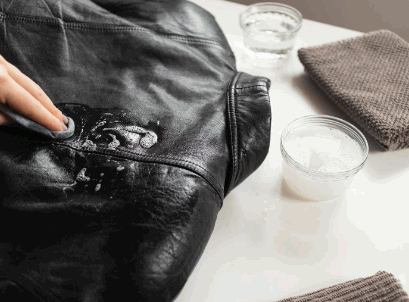
Replacing Zippers And Buttons
Replacing worn or damaged zippers and buttons on a leather coat is an important aspect of maintenance, ensuring functional integrity and aesthetic appeal. Properly executed repairs can breathe new life into your coat, making it look and feel as good as new.
To successfully tackle this task, you need a few essential tools: a seam ripper to remove old zippers and buttons, a needle and thread compatible with leather, and the replacement parts themselves. When selecting materials, consider the weight and color of zippers and buttons to match the coat seamlessly.
- Tip: Opt for heavy-duty zippers for durability.
- When choosing buttons, prioritize those made from robust materials to withstand wear.
- Professional services can be invaluable for intricate repairs.
Before starting the project, ensure you have a clean workspace and ample lighting. Simply put, paying attention to these details can significantly enhance the longevity of your leather coat, as well as other leather products. With the right approach, your repairs can look professional, preserving both the function and style of your beloved garment. Leather Laundry services can also be beneficial for maintaining your coat.
Reconditioning And Restoring The Leather
Reconditioning and restoring leather are crucial for maintaining the coat’s softness and appearance, often involving the use of high-quality products to nourish and rejuvenate the leather. Regular reconditioning not only prolongs the life of the coat but also enhances its visual appeal.
To effectively undertake this process, one should follow several essential steps. Start by carefully cleaning the leather with a gentle cleaner specifically designed for leather, as this removes dirt and grime without damaging the material. Next, let the coat dry naturally, avoiding direct sunlight or heat sources that can lead to cracking.
After cleaning, applying a nourishing conditioner is vital—helping to restore the moisture and flexibility of the leather. Finish with a leather protectant to shield the coat from future wear and tear.
- Check for any special instructions on leather equipment tags.
- Clean the leather gently.
- Allow it to dry naturally.
- Apply conditioner generously.
- Finish with a protective layer.
By prioritizing quality products and techniques, one ensures their leather coat not only looks stunning but also withstands the test of time.

Conclusion
A leather coat represents a significant investment in style and comfort, and understanding the importance of proper care and maintenance, similar to how oil preserves leather during WWII, can greatly enhance its lifespan and appearance. By choosing the right leather type, investing in quality craftsmanship, and adopting a consistent care routine, you can ensure that your leather coat remains a cherished piece of your wardrobe for years to come.
Leather, as a natural material, is not only about aesthetics; it also requires thoughtful attention to maintain its integrity. By implementing appropriate leather care practices, one can uphold the coat’s luxurious texture and prevent common issues such as cracking and fading.
- Investing in a quality leather conditioner ensures that the material retains its moisture and flexibility.
- Regular cleaning using a soft, damp cloth can prevent dirt buildup. LTT in the UK also offers specialized cleaning services that can be considered.
- Seasonal protective treatments, using high-quality products, can help shield against water and stains.
Ultimately, committing to regular maintenance habits not only protects this treasured investment but also enhances the overall experience of wearing and enjoying a leather coat.
